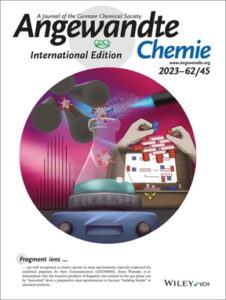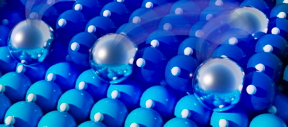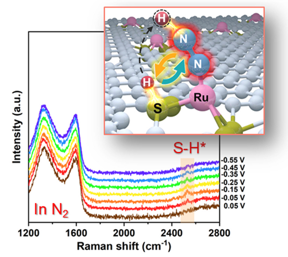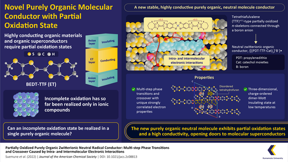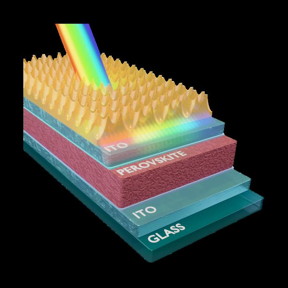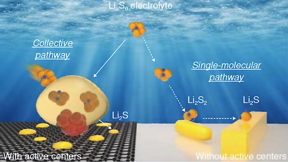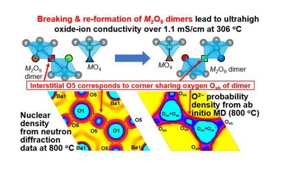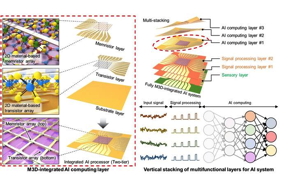Home > Press > The National Space Society Congratulates NASA on the Success of Artemis I Same-day Launch of the Hakuto-R Lunar Landing Mission will Help Support Future Lunar Crews
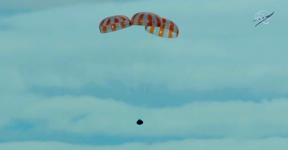 |
| Orion on Parachutes. Credit: NASA |
Abstract:
On Sunday, December 11, the National Space Society marked two important steps toward a future human presence on the Moon. First, the uncrewed mission of Artemis I was completed when Lockheed Martin’s Orion capsule splashed down in the Pacific Ocean off the coast of Baja California. The successful recovery of the spacecraft signaled the end of a successful 26-day shakedown cruise for the Orion spacecraft and the first launch of the Boeing-built Space Launch System.
The National Space Society Congratulates NASA on the Success of Artemis I Same-day Launch of the Hakuto-R Lunar Landing Mission will Help Support Future Lunar Crews
Washington, DC | Posted on December 12th, 2022
Earlier the same day, a SpaceX Falcon 9 rocket lofted Japan’s Hakuto-R lunar lander and the UAE’s Rashid lunar rover, as well as NASA’s Lunar Flashlight mission, toward the Moon. If Hakuto-R lands successfully, it will be the first privately funded lunar surface mission. Additionally, the Lunar Flashlight will use an infrared spectrometer to search for water ice on the Moon, and is constructed, in part, from commercially available off-the-shelf components as a cost-saving measure. Hakuto-R and the Rashid rover, like Artemis I, seek to prove new technologies for lunar exploration.
“The close overlap of the return of Artemis 1 and the launch of the Hakuto-R lunar lander demonstrate the accelerating pace and international character of this new era of lunar exploration,” said Anita Gale, NSS CEO. “‘It’s fitting that these events happened during the 50th anniversary of the Apollo 17 mission, the last time people walked on the Moon.
Artemis I was launched on November 16 from the Kennedy Space Center after a series of delays due to weather and technical challenges. After a smooth flight into orbit, the Orion capsule and upper propulsive stage separated from the Space Launch System rocket and was soon thrust into a trajectory sending it to a high, looping orbit past the Moon. The shakedown mission went exceedingly well with only minor technical glitches, with all major systems on Orion checking out and spectacular images of the Earth and the Moon sent back at regular intervals.
The mission lasted 26 days and everything from the capability of the SLS rocket to avionics and other systems aboard the Orion spacecraft were thoroughly tested. Although communication with Orion was at one point lost for 47 minutes, the spacecraft proved its mettle, setting the Orion and its booster onto a pathway for the second Artemis mission, a crewed flyby of the Moon, to launch in 2024.
“Although the testing of Orion and the SLS went well,” said Dale Skran, COO of the NSS, “some of the most exciting Artemis 1 rideshare missions, including the Japanese OMOTENASHI lunar radiation probe and NASA’s Near-Earth Asteroid Scout, have been declared lost.” Seven of the 10 rideshares continue to function, however, including Morehead State University’s Lunar IceCube smallsat, which will also seek water on the lunar surface. “The combination of both Lunar IceCube and the Lunar Flashlight promise major progress in our understanding of where lunar water resources might be found, which are important to for future lunar development projects.” Water ice on the Moon can be used to create rocket fuel, breathable oxygen, and potable water, avoiding the expense of launching from Earth in the future.
The reentry of Orion was a critical part of the test flight. A “skip reentry” technique was tested for the first time on a crew-capable spacecraft and allowed the capsule to skip off Earth’s upper atmosphere once before reentry, providing enhanced accuracy in the targeting of its landing site and reducing gravitational loads on equipment and, in the future, human crews. Also on the critical path to success in lunar flights was the 25,000 mile-per-hour test of the heat shield on Orion’s blunt bottom. It is the largest heat shield ever manufactured and protects the spacecraft and its crew from the scorching heat of reentry, about 5000 degrees Fahrenheit.
“It’s important to test these kinds of systems in their operational environments—in space and on the Moon—before proceeding with more ambitious mission plans,” said Rod Pyle, Editor in Chief of the NSS’s flagship magazine, Ad Astra. “Orion and SLS made the grade, and the rideshare missions will test technologies critical to affordable human settlement of the Moon, and beyond, in the future.”
####
About National Space Society
The National Space Society was founded in 1987 via a merger of the National Space Institute and the L5 Society. The NSS is the preeminent citizens’ voice on space exploration, development, and settlement. To learn more about the NSS and its mission to establish humanity as a spacefaring species, visit us on the web at space.nss.org.
For more information, please click here
Contacts:
Dale Skran: 908-610-3615
Copyright © National Space Society
If you have a comment, please Contact us.
Issuers of news releases, not 7th Wave, Inc. or Nanotechnology Now, are solely responsible for the accuracy of the content.
| Related News Press |
News and information
![]() Experimental nanosheet material marks a step toward the next generation of low-power, high-performance electronics December 9th, 2022
Experimental nanosheet material marks a step toward the next generation of low-power, high-performance electronics December 9th, 2022
![]() Tin selenide nanosheets enables to develop wearable tracking devices December 9th, 2022
Tin selenide nanosheets enables to develop wearable tracking devices December 9th, 2022
![]() New method of reducing carbon dioxide could be a golden solution to pollution December 9th, 2022
New method of reducing carbon dioxide could be a golden solution to pollution December 9th, 2022
Possible Futures
![]() 3D-printed decoder, AI-enabled image compression could enable higher-res displays December 9th, 2022
3D-printed decoder, AI-enabled image compression could enable higher-res displays December 9th, 2022
Discoveries
![]() Experimental nanosheet material marks a step toward the next generation of low-power, high-performance electronics December 9th, 2022
Experimental nanosheet material marks a step toward the next generation of low-power, high-performance electronics December 9th, 2022
![]() Tin selenide nanosheets enables to develop wearable tracking devices December 9th, 2022
Tin selenide nanosheets enables to develop wearable tracking devices December 9th, 2022
![]() New method of reducing carbon dioxide could be a golden solution to pollution December 9th, 2022
New method of reducing carbon dioxide could be a golden solution to pollution December 9th, 2022
Announcements
![]() Experimental nanosheet material marks a step toward the next generation of low-power, high-performance electronics December 9th, 2022
Experimental nanosheet material marks a step toward the next generation of low-power, high-performance electronics December 9th, 2022
![]() Tin selenide nanosheets enables to develop wearable tracking devices December 9th, 2022
Tin selenide nanosheets enables to develop wearable tracking devices December 9th, 2022
![]() New method of reducing carbon dioxide could be a golden solution to pollution December 9th, 2022
New method of reducing carbon dioxide could be a golden solution to pollution December 9th, 2022
Aerospace/Space
![]() Surface microstructures of lunar soil returned by Chang’e-5 mission reveal an intermediate stage in space weathering process September 30th, 2022
Surface microstructures of lunar soil returned by Chang’e-5 mission reveal an intermediate stage in space weathering process September 30th, 2022
![]() Strain-sensing smart skin ready to deploy: Nanotube-embedded coating detects threats from wear and tear in large structures July 15th, 2022
Strain-sensing smart skin ready to deploy: Nanotube-embedded coating detects threats from wear and tear in large structures July 15th, 2022
Grants/Sponsored Research/Awards/Scholarships/Gifts/Contests/Honors/Records
![]() An on-chip time-lens generates ultrafast pulses: New device opens the doors to applications in communication, quantum computing, astronomy November 18th, 2022
An on-chip time-lens generates ultrafast pulses: New device opens the doors to applications in communication, quantum computing, astronomy November 18th, 2022
![]() Rice turns asphaltene into graphene for composites: ‘Flashed’ byproduct of crude oil could bolster materials, polymer inks November 18th, 2022
Rice turns asphaltene into graphene for composites: ‘Flashed’ byproduct of crude oil could bolster materials, polymer inks November 18th, 2022
![]() How “2D” materials expand: New technique that accurately measures how atom-thin materials expand when heated could help engineers develop faster, more powerful electronic devices November 18th, 2022
How “2D” materials expand: New technique that accurately measures how atom-thin materials expand when heated could help engineers develop faster, more powerful electronic devices November 18th, 2022
![]() New insights into energy loss open doors for one up-and-coming solar tech November 18th, 2022
New insights into energy loss open doors for one up-and-coming solar tech November 18th, 2022
- SEO Powered Content & PR Distribution. Get Amplified Today.
- Platoblockchain. Web3 Metaverse Intelligence. Knowledge Amplified. Access Here.
- Source: http://www.nanotech-now.com/news.cgi?story_id=57261
- 000
- 1
- 10
- 11
- 2024
- 9
- a
- About
- Academy
- accelerating
- accuracy
- accurately
- Ad
- Additionally
- affordable
- After
- All
- Although
- ambitious
- and
- Anniversary
- applications
- Artemis
- Asteroid
- Astra
- Atmosphere
- Australia
- available
- avoiding
- back
- before
- Beyond
- bolster
- Bottom
- california
- carbon
- carbon dioxide
- Cells
- Center
- ceo
- challenge
- challenges
- character
- checking
- chief
- Citizens
- Close
- club
- Coast
- COM
- combination
- comment
- commercially
- Communication
- Completed
- complex
- components
- computing
- content
- continue
- coo
- could
- create
- created
- credit
- critical
- crude
- Crude oil
- cruise
- day
- Days
- dc
- December
- delays
- demonstrate
- deploy
- Design
- develop
- Development
- device
- Devices
- discover
- diseases
- doors
- down
- during
- earth
- editor
- Electronic
- enable
- enables
- energy
- Engine
- Engineers
- enhanced
- Entrepreneur
- equipment
- Era
- establish
- Ether (ETH)
- events
- EVER
- everything
- exciting
- Expand
- expanding
- exploration
- faster
- First
- first time
- fitting
- flagship
- flight
- Flights
- found
- Founded
- from
- Fuel
- function
- fund
- funded
- future
- generate
- generates
- generation
- gif
- Golden
- grade
- Graphene
- gravitational
- happened
- help
- helps
- High
- high-performance
- How
- However
- human
- Humanity
- ICE
- image
- images
- implications
- important
- in
- Inc.
- Including
- information
- insights
- Institute
- International
- IT
- Japan
- Japanese
- July
- landing
- lands
- large
- largest
- Last
- launch
- launched
- launching
- LEARN
- Level
- linked
- links
- loads
- Lockheed Martin
- loss
- made
- magazine
- major
- make
- manufactured
- Martin
- material
- materials
- Matrix
- measure
- measures
- Merger
- method
- Mettle
- might
- minor
- minutes
- Mission
- missions
- Moon
- more
- most
- nano
- nanotechnology
- Nasa
- National
- Nature
- net
- New
- New technologies
- New Zealand
- news
- next
- November
- ocean
- Oil
- ONE
- open
- opens
- operational
- optimal
- Orbit
- Other
- Oxygen
- Pace
- Pacific
- Pacific Ocean
- part
- past
- path
- People
- PHP
- plans
- plato
- Plato Data Intelligence
- PlatoData
- please
- Point
- Post
- posted
- powerful
- preeminent
- presence
- probe
- Program
- Progress
- projects
- promise
- Protein
- Proteins
- Prove
- proved
- providing
- Quantum
- quantum computing
- ready
- recovery
- reducing
- regular
- Releases
- researchers
- Resistance
- Resources
- responsible
- Results
- return
- reveal
- Said
- same
- Save
- scientists
- Scout
- Search
- Second
- Seek
- sending
- September
- Series
- setting
- settlement
- seven
- Share
- Shield
- site
- Skin
- smart
- snowflakes
- Society
- solar
- solution
- some
- something
- South
- Space
- SpaceX
- spectacular
- Stage
- start
- State
- Step
- Steps
- submit
- success
- successful
- Successfully
- such
- summer
- support
- Surface
- system
- Systems
- targeting
- Technical
- Technologies
- test
- Testing
- The
- their
- thoroughly
- threats
- time
- to
- tool
- toward
- Tracking
- trajectory
- treating
- UAE
- understanding
- Unexpected
- university
- us
- use
- via
- Voice
- walked
- washington
- Water
- Wave
- wearable
- Weather
- web
- which
- will
- wind
- working
- Yahoo
- youth
- Zealand
- zephyrnet










